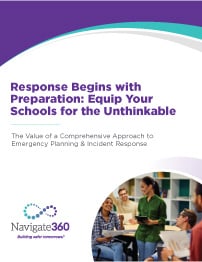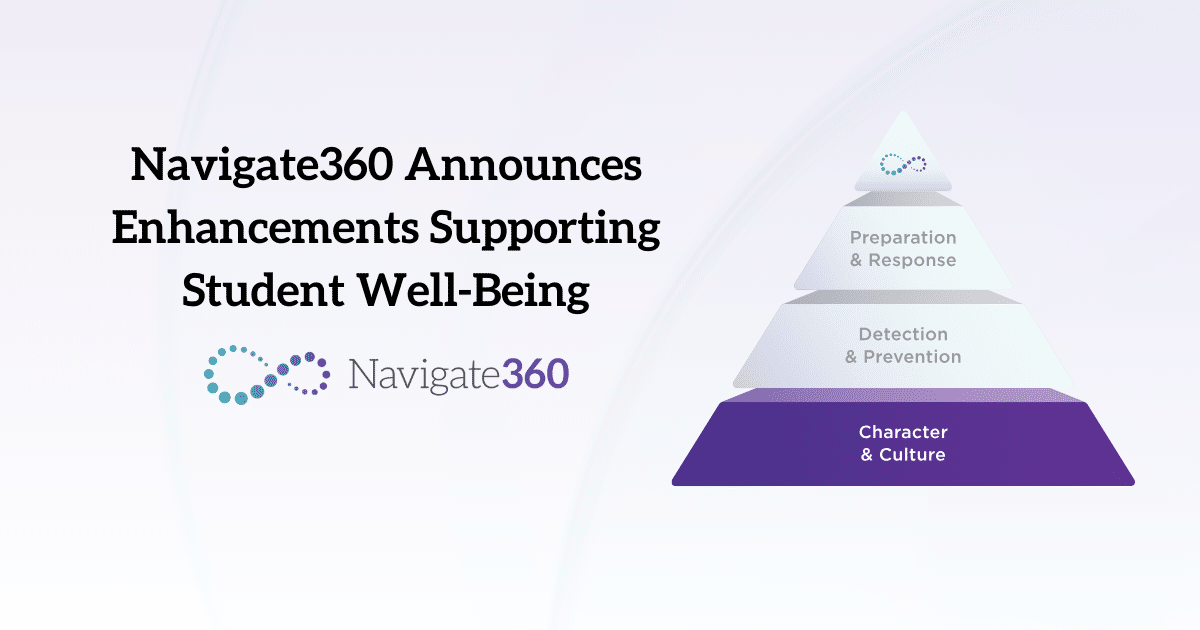Safety drills in schools are not just a formality. In an era where student safety concerns are at an all-time high, educational institutions must take proactive measures to ensure the well-being of their students and staff. School safety drills are a crucial component of this effort. Drills equip students and staff with the knowledge and skills they need to respond effectively in a crisis.
The Importance of School Safety Drills
School safety drills, including fire, lockdown, active shooter, and evacuation drills, are meticulously designed to ready students and educators to face an emergency with confidence. Particularly, these drills reinforce safety protocols, nurture readiness, and reduce panic during critical incidents.
Student and staff participation in training drills is essential for optimal safety outcomes and effective crisis response. Practicing how to respond to and communicate in a critical incident fosters familiarity with emergency protocols. Through drill practice, students grasp necessary crisis steps, enabling calm and suitable responses, and improving overall school safety.
Frequent drills enhance muscle memory, aiding responses during high-stress situations. This proficiency, garnered through varied training, amplifies the likelihood of saving lives. As a result, both staff and students demonstrate adept actions under pressure, showcasing their competence and skill.
Additionally, drill exercises bolster school-emergency responder relations, ensure uniform actions, and help schools optimize resources they would use during actual incidents. This collaboration establishes a coordinated approach, contributing to a safer learning environment.
Benefits of School Safety Drills
- Confidence and Empowerment: Regular safety drills instill a sense of confidence in students. Therefore, students feel empowered to take control of their safety and that of their peers when they are well-practiced in emergency procedures.
- Reduction of Anxiety: Emergency situations can trigger fear and anxiety among students, underscoring the importance of age-appropriate and trauma-informed safety drills. Drills play a role in easing these emotions. They provide a structured framework for response, specifically making real emergencies less daunting.
- Efficient Response: In high-stress situations, the ability to respond swiftly and efficiently is crucial. Safety drills create familiarity with escape routes, assembly points, and communication procedures, promoting a quicker and more organized response.
- Enhanced Communication: Effective communication is essential during emergencies. Safety drills emphasize clear communication methods, ensuring that information reaches all individuals involved and facilitating a coordinated response.
- Identifying Weaknesses: Safety drills also serve as valuable opportunities to identify weaknesses in emergency plans. Consequently, schools can use the insights gained from drills to refine and improve their safety protocols.
Implementing Successful Drills
Schools should consider the following strategies to maximize the benefits of their safety drills:
- Parent Communication: Prior communication with parents about upcoming drills is crucial. By notifying parents in advance, schools can alleviate concerns and apprehensions they might have. Moreover, this proactive approach enables parents to support the school and their child, reinforcing the understanding that drills are purely for practice.
- Regular Practice: Consistently conduct drills (in accordance with state law). This approach helps students and staff become familiar with procedures, increasing confidence in their ability to respond effectively.
- Variety of Scenarios: Rotate through different emergency scenarios to prepare for a range of situations, including fires, natural disasters, and intruders.
- Inclusive Approach: Ensure that all members of the school community, including students with disabilities, are included in safety drills. Provide accommodations as necessary to ensure their active participation and understanding.
- Debriefing and Feedback: After each drill, hold debriefing sessions to discuss what went well and identify areas for improvement. Incorporate feedback from students and staff to refine emergency protocols.
Safety drills in schools are required, but they cannot be treated as mere formalities; they are vital tools that empower students and staff to respond confidently and effectively during emergencies. By fostering a culture of preparedness and collaboration, schools can create safer environments where everyone is equipped with the knowledge and skills needed to navigate unforeseen challenges. Consequently, as educational institutions continue to prioritize student safety, the value of well-executed safety drills cannot be overstated.
Response Begins with Preparation: Equip Your Schools for the Unthinkable
Free eBook
 This eBook addresses emergency planning for a variety of scenarios, emphasizing the ability of technology to streamline response efforts, facilitate communication, and minimize disruptions. We also address the reality of violent critical incidents while highlighting the effective, options-based response training we offer through ALICE Training®.
This eBook addresses emergency planning for a variety of scenarios, emphasizing the ability of technology to streamline response efforts, facilitate communication, and minimize disruptions. We also address the reality of violent critical incidents while highlighting the effective, options-based response training we offer through ALICE Training®.
While you can’t predict all emergencies, you can help guarantee that your school is ready to respond to them. Download your free copy of this eBook today to get started.




